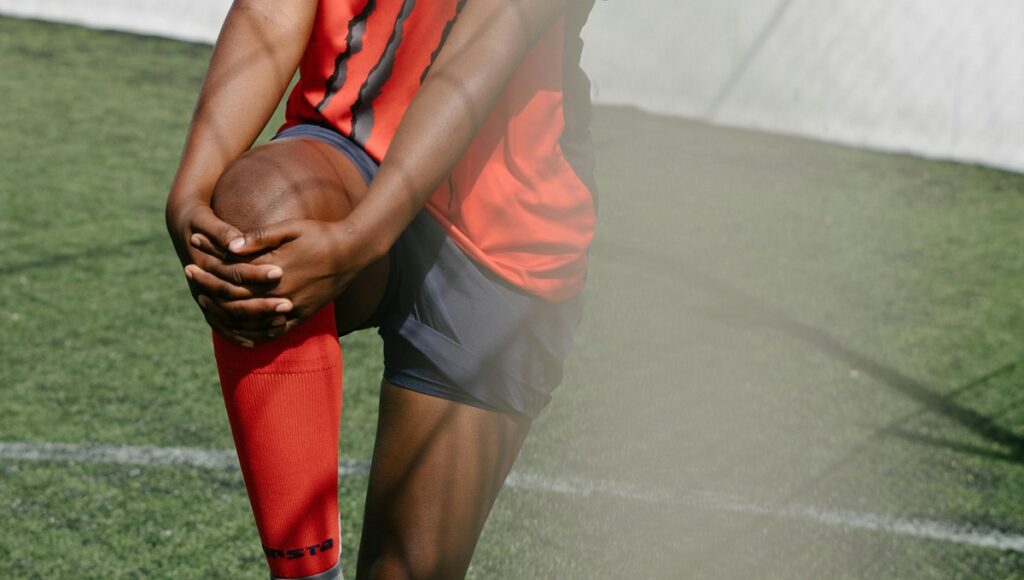
Non-Surgical Blog
Understanding Knee and Hip Pain: Causes and Solutions
April 22, 2025

- Knee and hip pain are common ailments that can stem from various factors, including arthritis, injuries, and overuse.
- Understanding the anatomy and mechanics of these joints is crucial for effective treatment.
- Diagnostic approaches range from physical exams to advanced imaging techniques..
- Maintaining a healthy lifestyle with regular exercise and proper body mechanics can prevent future pain and promote joint health.
Joint pain in the knees and hips is an incredibly common ailment that affects people of all ages. It can significantly impact your daily activities and overall quality of life. This blog post aims to shed light on the causes of knee and hip pain, exploring various treatment options available, from physical therapy and medications to more advanced interventions.
Understanding the underlying causes of your pain is the first step towards finding long-term relief and improved joint health.
Exploring the Anatomy of the Knee and Hip
The knee and hip joints are two of the largest and most complex joints in the human body. They play a crucial role in supporting body weight, facilitating movement, and maintaining stability. The hip joint, a ball-and-socket joint, allows for a wide range of motion, while the knee joint, a hinge joint, primarily enables bending and straightening of the leg.
Both joints are composed of bones, cartilage, ligaments, tendons, and muscles that work together to ensure smooth and coordinated movement. The bones provide the structural framework, while the cartilage acts as a cushion between the bones, reducing friction. Ligaments connect bones to other bones, providing stability to the joints, and tendons connect muscles to bones, enabling movement.
Key Structures of the Knee Joint
The knee joint is a complex structure that involves the articulation of three bones: the femur (thighbone), the tibia (shinbone), and the patella (kneecap). It’s surrounded by a network of ligaments, tendons, and muscles that provide stability and facilitate movement. The menisci, C-shaped pieces of cartilage, act as shock absorbers between the femur and tibia.
One of the key structures of the knee is the iliotibial band, a thick band of tissue that runs along the outside of the thigh from the hip to the shinbone. The iliotibial band helps stabilize the knee joint and can become irritated or inflamed, especially in runners, leading to a condition called iliotibial band syndrome.
Another common knee problem is patellofemoral pain syndrome, often referred to as “runner’s knee.” This condition involves pain around the kneecap, usually due to overuse, injury, or misalignment of the patella. Understanding the anatomy of the knee joint is crucial for understanding the mechanics of knee movement and the potential causes of knee pain.
Understanding Hip Joint Mechanics
The hip joint, a ball-and-socket joint, connects the femur (thigh bone) to the pelvis. This unique design allows for a wide range of motion, enabling activities such as walking, running, and jumping. The smooth, gliding movement of the ball within the socket is facilitated by a layer of articular cartilage that covers the bone surfaces.
As a weight-bearing joint, the hip joint endures significant forces and stress during movement. The surrounding muscles and ligaments provide stability and support, but factors such as age, injury, and overuse can contribute to the development of hip problems, including hip osteoarthritis.
Hip osteoarthritis occurs when the cartilage within the hip joint deteriorates, leading to pain, stiffness, and reduced range of motion. This degenerative condition is a common cause of hip pain, particularly in older adults.
Common Causes of Knee and Hip Pain
Knee and hip pain can be attributed to a variety of factors, often stemming from underlying medical conditions, injuries, or overuse. One of the most common causes is osteoarthritis, a degenerative joint disease that leads to the breakdown of cartilage in the joints. Other contributing factors include rheumatoid arthritis, bursitis, tendinitis, ligament tears, and fractures.
Lifestyle factors such as obesity, poor posture, and repetitive stress on the joints can also contribute to the development of knee and hip pain. In some cases, the pain may be referred from other areas of the body, such as the lower back or pelvis. Understanding the underlying cause of the pain is crucial for determining the most effective treatment approach.
The Role of Arthritis in Joint Pain
Arthritis is a general term encompassing various conditions that cause joint pain, stiffness, and inflammation. The two most common types of arthritis that affect the hip and knee are osteoarthritis and rheumatoid arthritis. Osteoarthritis is a degenerative joint disease characterized by the wear and tear of cartilage, the protective tissue that cushions the ends of bones.
Rheumatoid arthritis, on the other hand, is an autoimmune disorder where the body’s immune system mistakenly attacks the lining of the joints, leading to inflammation, pain, and stiffness. As rheumatoid arthritis progresses, it can cause damage to the cartilage and bone within the joints.
Both osteoarthritis and rheumatoid arthritis can significantly impact joint health and mobility, leading to chronic pain and disability if left untreated. Managing arthritis typically involves a multi-pronged approach including medication, physical therapy, and lifestyle modifications.
Impact of Injuries and Overuse
Injuries and overuse are common causes of knee and hip pain, often stemming from sports, accidents, or repetitive motions. These activities can place significant stress on the joints, potentially leading to a range of injuries and conditions.
Overuse injuries, as the name suggests, occur from repetitive stress on a joint over time. This can include activities like running, jumping, or even prolonged standing, particularly with improper form or inadequate conditioning. Overuse can lead to:
- Tendinitis: Inflammation of the tendons, which connect muscle to bone.
- Bursitis: Inflammation of the bursa, small fluid-filled sacs that cushion the joints.
- Stress fractures: Tiny cracks in the bone caused by repetitive stress.
Injuries, such as ligament tears or fractures, can occur suddenly from a direct impact or forceful twisting motion. It’s crucial to address both overuse and acute injuries promptly to prevent long-term damage and chronic pain.
Diagnostic Approaches for Knee and Hip Pain
Diagnosing the underlying cause of knee and hip pain typically begins with a thorough medical history and physical exam. Dr. Hall at Chattanooga Non-Surgical Orthopedics will inquire about your symptoms, their onset, and any activities that exacerbate or alleviate the pain. During the physical exam, they will assess your range of motion, joint stability, and any tenderness or swelling.
Based on the initial assessment, your doctor may recommend additional tests to confirm the diagnosis and rule out other potential conditions. These may include imaging tests like X-rays, or blood tests to check for inflammation markers.
When to Seek Medical Advice
While occasional knee or hip pain is common and often resolves with home remedies, it’s important to seek medical advice if the pain is severe, persistent, or accompanied by other concerning symptoms. Consulting with a healthcare professional is particularly important if:
- The pain interferes with your daily activities or sleep.
- The joint appears red, swollen, or feels warm to the touch.
- You experience sudden swelling in the joint.
- You have difficulty bearing weight on the affected leg.
Early diagnosis and treatment of knee and hip problems can help prevent further damage, alleviate pain, and improve your overall quality of life.
Modern Diagnostic Tools and Techniques
Modern medicine offers a range of advanced diagnostic tools and techniques that allow healthcare professionals to accurately diagnose and treat knee and hip pain. These tools provide detailed images and insights into the structure and function of your joints, enabling personalized treatment plans.
These diagnostic tools, along with a comprehensive physical exam and medical history, help healthcare professionals develop targeted treatment plans for knee and hip pain.
Conclusion
If you are experiencing knee and hip pain, understanding the underlying causes is crucial. From arthritis to injuries, these joints can be affected by various factors. Seeking timely medical advice and utilizing modern diagnostic tools can lead to effective solutions. Remember, early intervention is key in managing knee and hip pain.
If you need further assistance or have any questions, don’t hesitate to get in touch with us for expert guidance and support. Take proactive steps towards better joint health today.
Frequently Asked Questions
Can knee pain cause hip pain or vice versa?
While the knee joint and hip joint are distinct structures, pain in one can often lead to discomfort in the other. This is because they work together during movement, and issues in one joint can alter your gait or mechanics, placing additional strain on the other. A common cause of both knee and hip pain is often rooted in the lower back, where problems can radiate down the legs and impact your daily activities.
What are the first signs of needing a hip replacement?
If you’re experiencing persistent hip pain that limits your daily activities, it might be time to discuss hip replacement as a treatment option. Indications for this procedure include severe pain that’s unresponsive to conservative treatments, significant joint damage that restricts your range of motion, and a diminished quality of life due to compromised joint function

Search our blog posts: